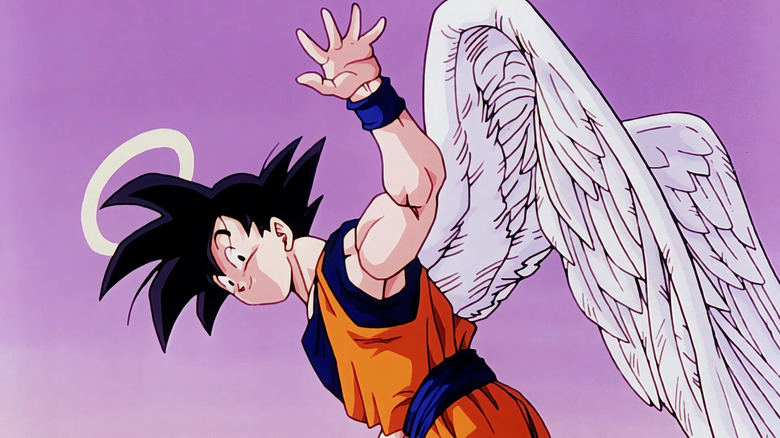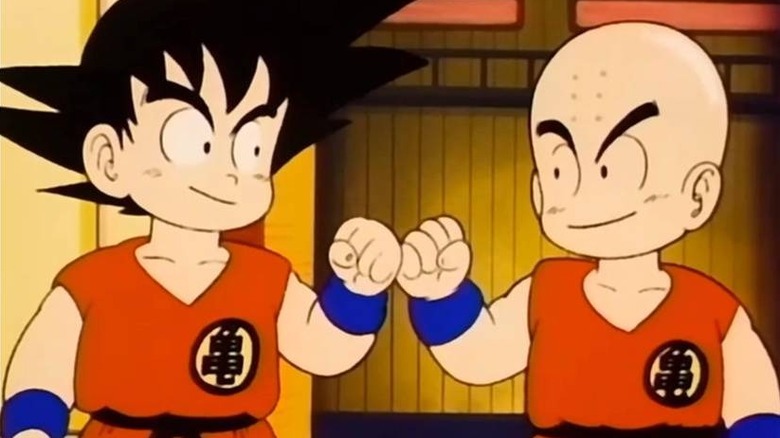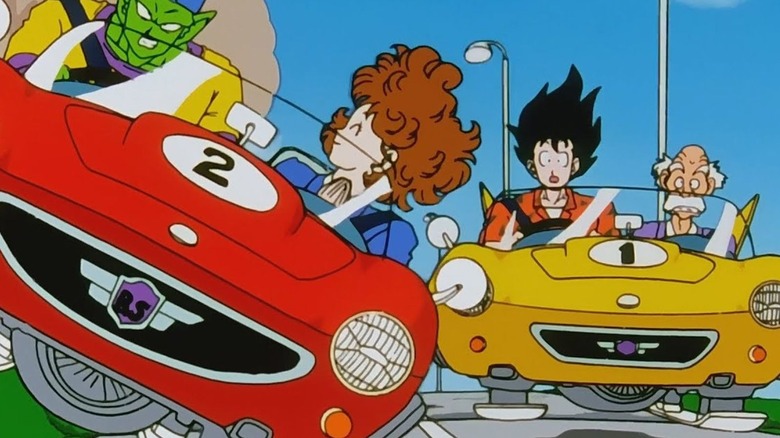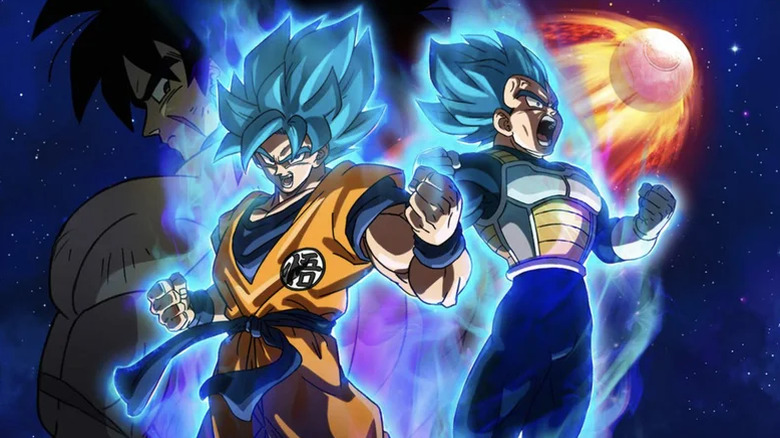
(Welcome to Ani-time Ani-where, a regular column dedicated to helping the uninitiated understand and appreciate the world of anime.)
Anime is more popular than ever before, with big American studios now seeking Japanese studios to collaborate on projects based on big IP, including “Lord of the Rings” and DC Comics. With dozens of shiny new shows coming out every four months, it’s hard to justify spending the time watching hundreds of episodes of an older show with limited animation, especially when the things that made them new have been copied, remixed, and parodied to death.
Take “Dragon Ball,” for instance. Countless manga and anime, from “One Piece” and “Naruto” to “My Hero Academia” and “Hunter x Hunter,” owe their existence to the late maestro Akira Toriyama and his work. Would live-action superhero movies like “Superman” pay homage to classic anime series had “Dragon Ball” not launched a million playground discussions about who could beat Goku in a fight?
It’s easy to understate just how big of a cultural impact “Dragon Ball” (and its sequel series, “Z”) had in both Japan and abroad. This is a franchise that helped save Toonami and turned a whole generation of kids into anime fans. Similarly, “Dragon Ball” itself has become synonymous with anime, with Goku becoming the archetypical anime protagonist. (Just think of how many anime characters have spiky hair just like him.) What other show would bring tens of thousands of people together on the streets of Mexico just to watch an animated fight?
All this is to say, the legacy of “Dragon Ball” is unequivocally unparalleled. Yet, if you watch “Dragon Ball” today, you might find that this is a classic that’s somehow even better than its reputation (and our collective memories) would suggest.
In case you’ve been living under a rock for the past 40 years, “Dragon Ball” follows Son Goku, a young boy who goes on adventures around the world (and to other worlds) in search of magic Dragon Balls that grant any wish. From there, the series quickly becomes a superhero story where Goku and his friends fight increasingly stronger enemies to save the world, and at times the multiverse.
What makes Dragon Ball great
Let’s get something out of the way first: No, you should never, ever skip “Dragon Ball” and go straight to “Z.” To do so would be to miss on the genius of Akira Toriyama’s storytelling, and most of all, his sense of humor and comedic timing. The original series is less of a constant brawl and much more of a fantasy adventure inspired by Jackie Chan movies that’s reliant on gag comedy. (The first episode dedicates an extended scene to tiny Goku just peeing in a river.) It takes only 11 episodes for Goku and his friends to gather all the Dragon Balls, and even then they are used for the first time on a joke of a wish. At every turn, the original “Dragon Ball” is all about finding the silliest gag and, with it, the most inventive and imaginative joke. Even when the series started introducing big tournament arcs, they were mostly about how funny it is to see tiny Goku beat much bigger and seemingly stronger opponents (or how he obliterated wave after wave of Red Ribbon Army soldiers).
Take the parade of villains that Goku faces throughout the “Dragon Ball” saga (including “Z” and “Super”), many of whom are not so much threatening or scary as they are hilariously silly and absurd. In fact, the very first antagonist on “Dragon Ball” was a tiny wannabe tyrant without a nose, while the Red Ribbon Army was comprised of ridiculous generals. This continued with “Z,” where we met the Ginyu Force (incredibly muscular warriors who are more preoccupied with striking a cool pose than actually fighting), or the lovable Majin Buu who turned people into chocolate and ate them.
The action in “Dragon Ball” is also unparalleled, both before and after the show’s shift in focus. At first, the series is all about martial arts, with Tiny Goku pulling Jackie Chan-style moves (and battling a poorly disguised Master Roshi who calls himself “Jackie Chun”) against dozens of enemies in exhilarating fights. (Part of what makes “Dragon Ball Daima” so good is that it brought back the property’s martial arts-inspired combat.) Yet, even a tfterhe show basically evolves into a superhero adventure, it continues to find new ways of raising the stakes and making each confrontation memorable and unique. Individual fights can last dozens of episodes, yet every second is thrilling and dynamic. The only reason “Yu Yu Hakusho” defies anime tropes and conventions the way it does is because “Dragon Ball” defined them in the first place.
What Dragon Ball adds to the conversation
Despite most of the big iconography of “Dragon Ball” involving Goku fighting, the series is much more than that. Part of the brilliance of the franchise is that it can be many things and explore many genres. Akira Toriyama may have never planned to make a series like “Dragon Ball” or to see it evolve the way it did, but he did make the most of it and managed to sustain the story as it developed. The plot started as a fantasy adventure inspired by “Journey to the West” and Chinese mythology and culture, although it also included a fair amount of Goku battling dinosaurs. And yet, “Dragon Ball” could also have plenty of futuristic sci-fi tech, in addition to demons and aliens from distant planets. Hell, “Dragon Ball Super” even brought in the multiverse.
This is the kind of everything-goes worldbuilding that would go on to inspire anime shows like “Naruto” and “One Piece,” giving rise to fleshed-out worlds that sustain a variety of tones and characters so strongly written they can remain recognizable even as they change. Indeed, the same Goku that used to monkey around and not know what a car or a girl was on “Dragon Ball” is also the same Goku that becomes a Superman-like alien with inhuman powers, as well as an absentee dad who trained in both Heaven and Hell, yet could not even earn his driver’s license.
Arguably one of the biggest contributions “Dragon Ball” made to the world of anime was its take on friendship and making allies. Before The Fast Saga turned mortal enemies into friends you invite over for dinner, “Dragon Ball” had Goku making friends with everyone who once tried to kill him. Krillin went from Goku’s biggest rival as a kid to his closest friend, while Yamcha became a core member of the team after once trying to rob Goku. Even Piccolo and Vegeta, who started out as irredeemable villains, ended up changing their ways, with the former becoming a surrogate father for Gohan and Vegeta transforming into the best husband in the franchise. Vegeta, in particular, even kickstarted a trend of anime rivalries that has carried over for decades and continues today. Everyone from Bakugo to Sasuke owe their arcs to Vegeta becoming Goku’s rival.
Why non-anime fans should check out Dragon Ball
It’s been 40 years since the “Dragon Ball” manga entered serialization, and the world of manga and anime hasn’t been the same since. Whether you’re a hardcore anime fan who watched “Dragon Ball Z” on Toonami, someone who’s familiar with every modern battle shonen manga but is afraid to go back to the source, or simply a newcomer who has never dared to watch “Dragon Ball” because it’s old or too long, let me assure you: the journey is worth it.
Even if you think you know what “Dragon Ball” is because of its reputation or the endless memes and iconic quotes, the franchise is so much more than that. It’s a hilarious, action-packed, heartfelt, endearing, bone-crushing, spirit bomb launching, father-son Kamehameha shooting epic that more than earns its reputation as one of the best anime of all time, and certainly the most famous. Again, there’s a reason every anime protagonist looks or acts a bit like Goku, while time-skips and power-ups are equally common in anime. It’s not just that “Dragon Ball” did them first; it’s that the show did those things so well that everyone wants to pay homage or copy its effect.
Akira Toriyama may no longer be with us, but “Dragon Ball” is forever.
Watch This If You Like: “Hunter x Hunter,” “My Hero Academia,” “Naruto.”
“Dragon Ball” is currently streaming on Crunchyroll and Hulu.





Leave a Reply